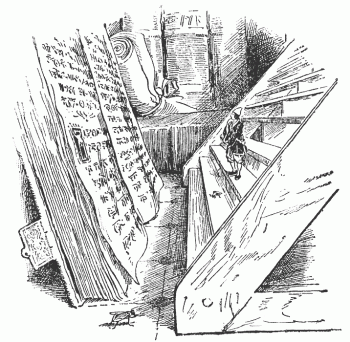TTA:Getting started/Commentaries: Difference between revisions
No edit summary |
No edit summary |
||
| Line 8: | Line 8: | ||
Anecdotes, identifying or clarifying historical information, provenance, examples of associated lyrics and miscellaneous information regarding a melody may be entered, including information about sources, playing techniques and peculiarities, etc. Every attempt should be made to separate information which is factual and verifiable from that which is speculative and unverified. Annotations and other entries will be assessed and reviewed by experienced TTA users, then approved, and a system for clarifying and resolving disputed information has been established (see section on "Edit Review" in the "Special Pages" in the left-hand toolbar of the TTA for more). Disputed elements of commentaries and identification of need for citation will be editorially inserted, and will follow established wiki processes until resolved. | Anecdotes, identifying or clarifying historical information, provenance, examples of associated lyrics and miscellaneous information regarding a melody may be entered, including information about sources, playing techniques and peculiarities, etc. Every attempt should be made to separate information which is factual and verifiable from that which is speculative and unverified. Annotations and other entries will be assessed and reviewed by experienced TTA users, then approved, and a system for clarifying and resolving disputed information has been established (see section on "Edit Review" in the "Special Pages" in the left-hand toolbar of the TTA for more). Disputed elements of commentaries and identification of need for citation will be editorially inserted, and will follow established wiki processes until resolved. | ||
When you finished inserting the Tune and save your work, the resulting Tune page has a red link on top of the form that, if clicked, open a new page where to add your annotation. | |||
The new page is not a blank page but a template page to fill with your information. | |||
At the end of your work you will get something like this (just an example): | |||
__NOABC__ | |||
<div class="noprint"> | |||
<p><font face="sans-serif" size="4"> Back to [[{{BASEPAGENAME}}]] </font></p> | |||
</div> | |||
---- | |||
{{#lst:{{PAGENAME}}|abc}} | |||
---- | |||
<div style="page-break-before:always"></div> | |||
<p><font face="sans-serif" size="3"> | |||
<div style="text-align:justify;"> | |||
<br> | |||
'''GIGUE DES BAVARDS.''' (Talkers Gigue?). French-Canadian, Reel (cut time). C Major. Standard tuning (fiddle). AABB'. "Gigue des bavards" was recorded in 1938 in Montreal by fiddler-composer [[biography:Isidore Soucy]] (1899-1962), who was accompanied on the recording by his nephew, pianist Romuald Soucy. | |||
<br> | |||
<br> | |||
</div> | |||
</font></p> | |||
<div class="noprint"> | |||
<p><font face="sans-serif" size="3"> '''Additional notes''' </font></p> | |||
<p><font face="sans-serif" size="3"> | |||
<font color=red>''Source for notated version''</font>: - | |||
<br> | |||
<br> | |||
</font></p> | |||
<p><font face="sans-serif" size="3"> | |||
<font color=red>''Printed sources''</font> : - | |||
<br> | |||
<br> | |||
</font></p> | |||
<p><font face="sans-serif" size="3"> | |||
<font color=red>''Recorded sources'': </font> <font color=teal> -Starr 16176 (78 RPM), Isidore Soucy (1938). </font> | |||
<br> | |||
<br> | |||
</font></p> | |||
<p><font face="sans-serif" size="3"> | |||
See also listing at:<br> | |||
Hear Isidore Soucy's 1938 recording at the Virtual Gramophone [http://www.collectionscanada.ca/obj/m2/f7/14149.mp3]<br> | |||
</font></p> | |||
<br> | |||
---- | |||
<p><font face="sans-serif" size="4"> Back to [[{{BASEPAGENAME}}]] </font></p> | |||
</div> | |||
__NOEDITSECTION__ | |||
{{-}} | {{-}} | ||
|} | |} | ||
Revision as of 15:48, 24 June 2019
|
New Users Adding tunes Tune book Recorded sources Tune Annotations Typesetting Guidelines Public domain material Theme Code Index
|
 AnnotationsAnecdotes, identifying or clarifying historical information, provenance, examples of associated lyrics and miscellaneous information regarding a melody may be entered, including information about sources, playing techniques and peculiarities, etc. Every attempt should be made to separate information which is factual and verifiable from that which is speculative and unverified. Annotations and other entries will be assessed and reviewed by experienced TTA users, then approved, and a system for clarifying and resolving disputed information has been established (see section on "Edit Review" in the "Special Pages" in the left-hand toolbar of the TTA for more). Disputed elements of commentaries and identification of need for citation will be editorially inserted, and will follow established wiki processes until resolved. When you finished inserting the Tune and save your work, the resulting Tune page has a red link on top of the form that, if clicked, open a new page where to add your annotation. The new page is not a blank page but a template page to fill with your information. At the end of your work you will get something like this (just an example):
|
